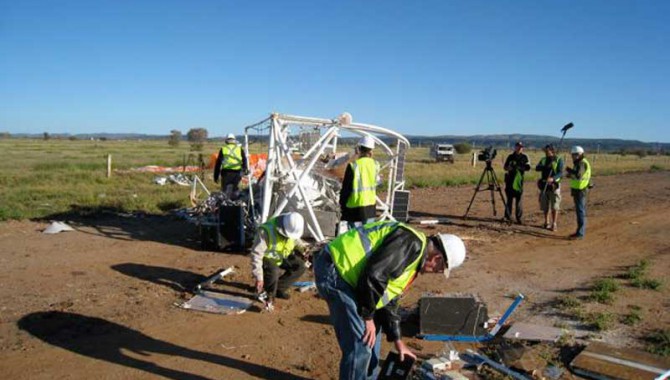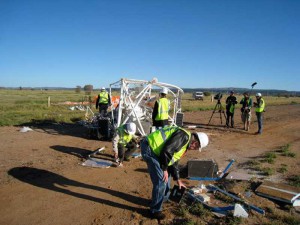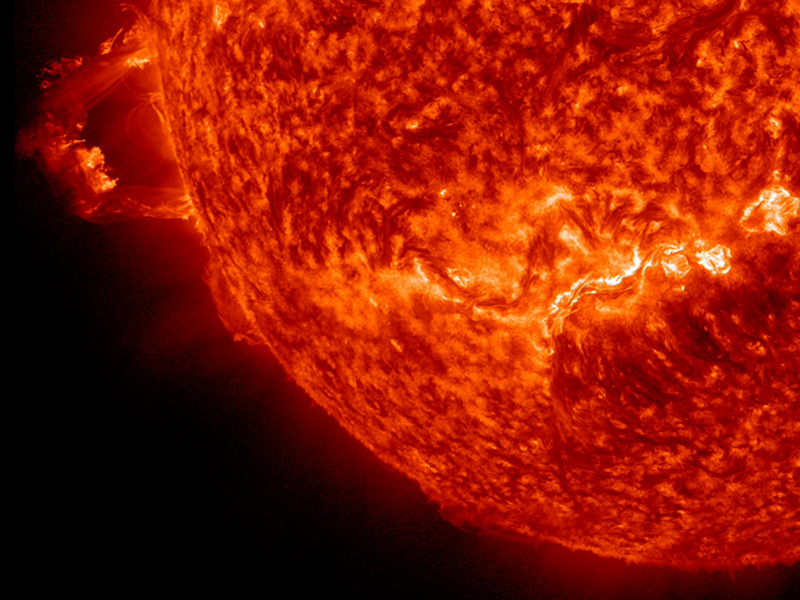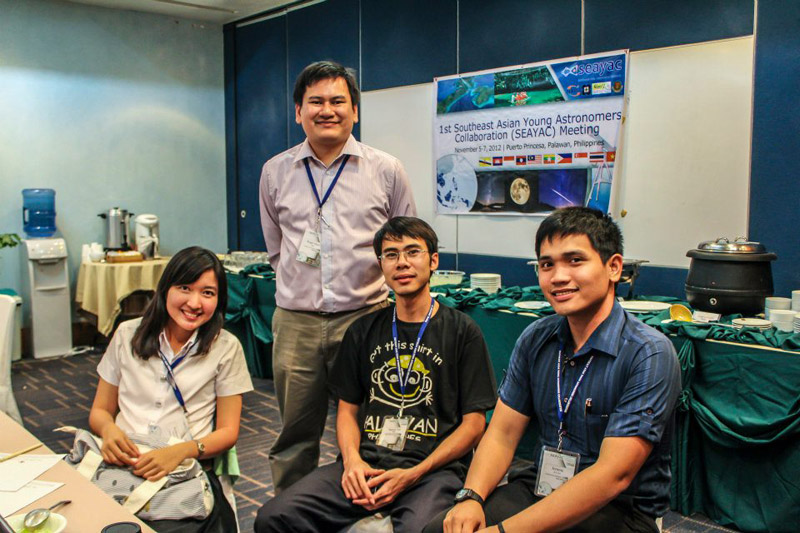
Project personnel inspect damage following a NASA scientific balloon launch mishap on April 28 at the Alice Springs Balloon Launching Center, near Alice Springs, Australia. Photo Credit: NASA
Vol. 5, Issue 11
A 2010 balloon mishap serves as a valuable case study.

Project personnel inspect damage following a NASA scientific balloon launch mishap on April 28 at the Alice Springs Balloon Launching Center, near Alice Springs, Australia.
Photo Credit: NASA
On April 29, 2010 in Alice Springs, Australia, a balloon carrying the Nuclear Compton Telescope (NCT), a University of California Berkeley gamma-ray telescope designed to search for distant galaxies, inadvertently separated from its launch vehicle and dragged along the ground for approximately 150 yards before hitting the airport fence and finally a parked car. The payload narrowly missed the launch spectators.
“A routine launch ended in a high visibility mishap,” said David Pierce, Senior Program Executive for Suborbital Research for the Science Mission Directorate at NASA Headquarters and keynote speaker for the NASA Safety Center’s inaugural Case Study Forum Series event on the mishap.
Pierce presented the timeline leading up to the NCT mishap to a Goddard Space Flight Center audience and virtual participants from across the agency. Extensive rain prior to the campaign, an inadequate hazard area, miscommunication, an inadequate hazard area, and unforeseen technical problems contributed to the failed launch and the mishap.
As a result, the mishap investigation brought to light that the flow-down of agency safety requirements was inadequate, and that hardware limitations existed that the program needed to address.
“While we had a really bad day in Australia, the one benefit and ending to this near-tragic story is that we developed a much stronger safety process in the program,” said Pierce. “Hopefully, sharing our lessons learned will be relevant to your current and future work.”
Download the “Balloon Mishap in the Outback” case study.
View video of David Pierces presentation on the mishap. (NASA Internal Only).
See a PowerPoint presentation on the NCT balloon mishap. (NASA Internal Only)
Stay up to date on when the next quarterly case study event will take place.









